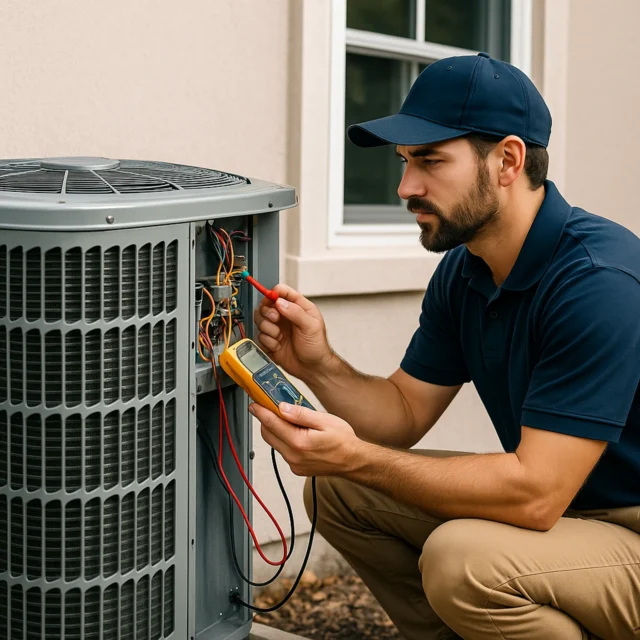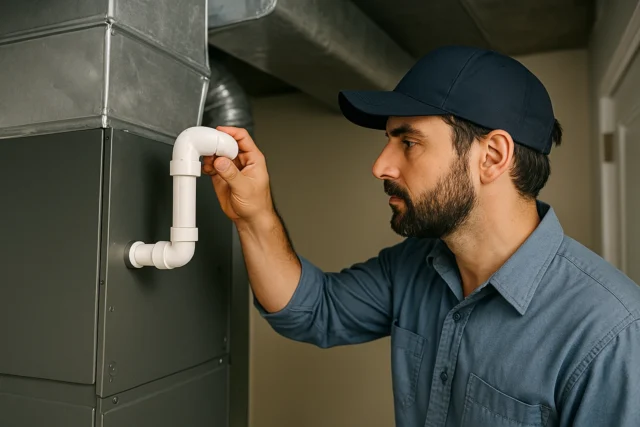The Best HVAC Filter for Allergies: How to Breathe Cleaner Air at Home

When spring arrives, many people prepare for sunshine, fresh air — and allergy season. For homeowners, the key to managing allergies indoors often starts with one simple upgrade: choosing the best HVAC filter for allergies.
A high-quality filter doesn’t just trap dust — it captures microscopic particles that trigger sneezing, coughing, and itchy eyes. Whether you live in a coastal area with humidity or a dry inland region with pollen and dust, the right filter can transform your home’s air quality and overall comfort.n
Understanding the Role of HVAC Filters
Your HVAC filter does far more than protect your system from debris. It acts as the first line of defense for your lungs. When air passes through your air handler, the filter traps harmful particles like:
Dust mites and pet dander
Mold spores
Pollen and fibers
Smoke and pollutants
The cleaner your air handler’s components remain, the more efficiently your system works — and the healthier your indoor air becomes. That’s why maintaining both your filter and your air handler is essential. A dirty or clogged filter can force the blower motor to work harder, reducing airflow and increasing energy costs.
If your filter has been neglected for more than a few months, it’s time to take a look — your air handler will thank you.
Types of HVAC Filters for Allergy Control
Choosing the right filter depends on what you want to remove from your air and how sensitive your household is to allergens. Here’s a breakdown of the most effective types:
1. HEPA Filters
HEPA (High-Efficiency Particulate Air) filters are the gold standard for allergy sufferers. They capture up to 99.97% of airborne particles as small as 0.3 microns. These filters are ideal for households with pets, children, or anyone with asthma or chronic allergies.
2. Pleated Filters
Pleated filters offer a strong balance between airflow and filtration. They trap dust and pollen effectively while allowing consistent system performance. Many homeowners find them perfect for standard residential systems.
3. Electrostatic Filters
These reusable filters use static electricity to attract dust and allergens. They can be washed and reinstalled — a cost-efficient and eco-friendly option. However, their performance depends on regular cleaning.
4. Activated Carbon Filters
If your home experiences odors from pets, cooking, or smoke, activated carbon filters are a smart addition. They neutralize odors while capturing fine particles, enhancing indoor comfort.
MERV Ratings: What They Mean
Filters are rated by MERV (Minimum Efficiency Reporting Value). The higher the MERV rating, the smaller the particles a filter can capture.
MERV 8–10: Traps basic dust and pollen — suitable for average homes.
MERV 11–13: Blocks pet dander, mold spores, and finer particles — great for allergy sufferers.
MERV 14+: Typically used in hospitals or environments requiring ultra-clean air.
A Customer First AC recommends consulting a technician before upgrading your filter. Extremely high-MERV filters can restrict airflow if your system isn’t designed for them, potentially stressing your blower motor or air handler.
The Air Handler: Your Allergy Ally
Your air handler plays a crucial role in distributing clean, conditioned air throughout your home. Even the best filter can’t do its job if the air handler isn’t properly maintained. Dust and allergens can accumulate on coils and fans, reducing performance and air quality.
Scheduling regular HVAC maintenance ensures that your filter and air handler work together efficiently. Our experts at A Customer First AC clean coils, check ducts, and ensure the entire system supports healthy airflow — especially during allergy season.
Signs Your Filter Needs Replacing
Not sure when to swap out your filter? Look for these signs:
Increased dust accumulation around vents
Weaker airflow or longer cooling cycles
Allergy symptoms worsening indoors
A visible gray layer of dust on the filter surface
In general, filters should be replaced every 1–3 months, depending on your home’s air quality, pets, and usage.
The Cost of Clean Air
While filters range from $10 to $80 depending on quality, their long-term benefits outweigh the cost. Cleaner air means fewer doctor visits, less dusting, and longer HVAC lifespan. Even upgrading your air handler to support advanced filtration can pay off through improved energy efficiency.
If you’re considering a system upgrade, check out our AC installation services — our experts can design a setup that balances comfort, energy savings, and allergy control.
Pro Tips for Allergy-Friendly Air
Keep windows closed during high pollen days.
Vacuum regularly with a HEPA-equipped vacuum cleaner.
Use dehumidifiers to reduce mold and dust mite growth.
Replace filters on schedule and keep spares on hand.
Book seasonal tune-ups to maintain peak system performance.
Final Thoughts
Breathing clean air shouldn’t be a luxury — it’s a necessity for a healthy home. Selecting the best HVAC filter for allergies ensures every breath you take indoors is fresh, safe, and comfortable.
With proper filter maintenance and a well-serviced air handler, you can finally say goodbye to itchy eyes, stuffy noses, and endless sneezing.
When it’s time to upgrade your system or improve your home’s air quality, trust the professionals at A Customer First AC— your local experts in comfort, cleanliness, and care.


